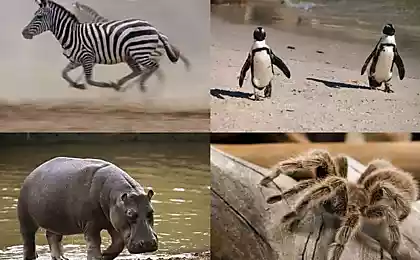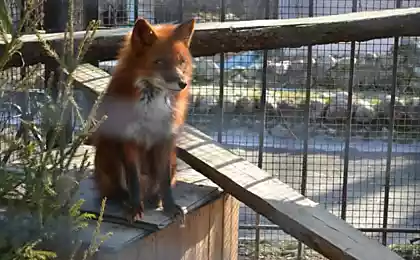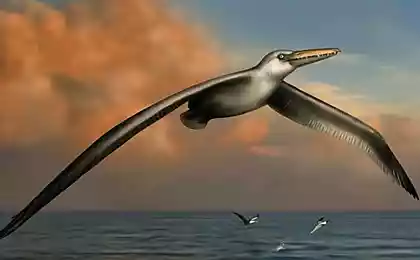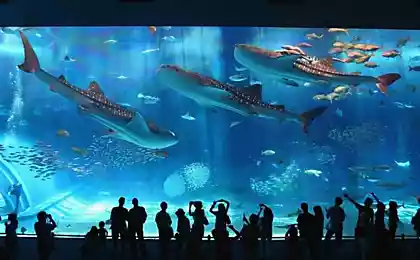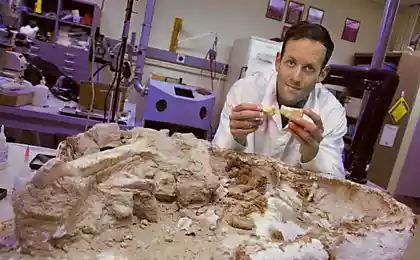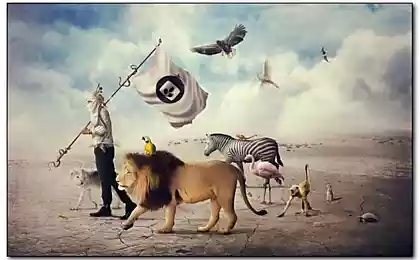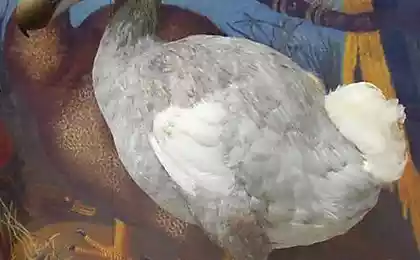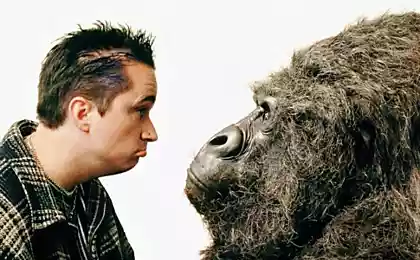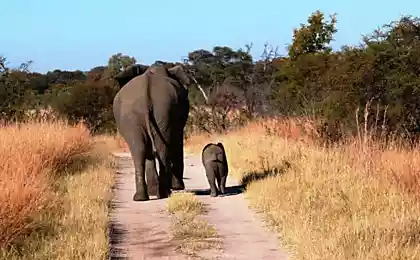206
5 revived species of extinct animals
There are more and more news that scientists are going to revive or have already revived extinct life forms. However, we are not talking about restoring the dinosaur population, at least not yet. But mammoths have a chance for a new life, like some other animals and plants. Today we will talk about the five most promising scientific studies in this direction.
Resurrection of ancient moss
Moss, of course, is not an animal, but it was also included in our review. A group of British and New Zealand researchers have successfully defrost and revive several moss sprouts found in the Antarctic ice.
The study of moss sprouts of the species Chorisodontium aciphyllum showed that they were covered with ice and frozen about fifteen hundred years ago, but now they have returned to life. After two weeks of slow defrosting, these sprouts gave new shoots, which was evidence of their revival.
Thus, scientists have made sure that moss, along with bacteria, can survive even in the most extreme conditions, interrupting the processes of its life for hundreds or even thousands of years.
Mammoth cloning
There is also a lot of snow and ice in Yakutia. But they decided to aim for much larger goals! Scientists from the North-Eastern Federal University (Yakutsk) while studying the found carcass of a frozen mammoth forty-three thousand years ago found vessels filled with hemolyzed blood.
The study of this brown liquid showed that it was formed not after the death of the animal, but while he was walking through the expanses of modern Yakutia, it has red blood cells, leukocytes and hemoglobin.
The representative of the Association of medical anthropologists of the Russian Federation Radik Khairullin, who participated in the research, said that scientists have seriously begun to consider the possibility of cloning a long-extinct animal. However, it will not be possible to create a full-fledged mammoth, because the genes of the ancient proboscis will need to be crossed with the genetic material of a modern elephant. So the result is just a hybrid.
Cloning of an extinct frog embryo
However, despite the successes of cloning as such, humanity cannot yet boast of the revival of many extinct animals with the help of appropriate technologies - successful cases are counted in units. But the process is underway. For example, Australians from the University of New South Wales have been engaged in the issue of returning the reobatrachus frog (Rheobatrachus silus) to nature for several years.
This species of amphibians was known for the fact that mothers carried their fertilized eggs in the stomach until the frogs themselves jumped out of the mother’s mouth. Caring frogs (another name for the species) have been considered extinct since 1983. But back in the seventies, scientists froze samples of their tissues, from which they are now trying to restore the animal.
As part of the Lasarus project, they want to recreate caring frogs by transplanting the nuclei of their somatic cells into an egg of a closely related species, Mixophyes fasciolatus. But so far, scientists have only managed to clone embryos with several hundred cells - the process is not progressing further for various reasons. However, with the development of new technologies, these difficulties can be overcome.
The marsupial wolf
Australian scientists hope to clone not only the caring frog, but also some other animals extinct on this continent in the past few decades. One of them is the legendary marsupial wolf, whose last recorded representative died in the zoo of the Tasmanian city of Hobart in 1936.
The Tasmanian wolf cloning project started in 1999 with the support of scientific institutions in Australia, the United Kingdom and the United States. As a basis for the genetic material, tissue samples of the young of this animal were taken, alcoholized in the late nineteenth – early twentieth century. They were removed in 2002, but they were all damaged. However, in 2008, scientists were able to make one of the genes of the marsupial wolf work in the embryo of a laboratory mouse.
The project has not yet advanced. The available samples are categorically insufficient for successful research. The technology available to scientists is far from perfect. The project is temporarily suspended.
Selection of zebra-quaggy
And the most successful project to date to revive an extinct species of animal has done without cloning and genetic engineering. We are talking about an uncouthed with the name of the quagga, the last of which died in the zoo of Amsterdam in 1883.
For hundreds of years, scientists have debated whether the quagga is a separate species of animal, or still a subspecies of the still living steppe zebra. It was only in the mid-eighties of the twentieth century that DNA comparisons showed that there was no difference between the two animals. And, therefore, by selection, you can grow individuals that do not differ from the real quagga.
The first brood consisted of only nine heads. In 2005, the first fourth generation of this reborn zebra appeared – it was recognized as a typical quagga, more like the original animal than stuffed in museums.
Now more than sixty quaggas live in South Africa and Namibia, and the process of breeding them does not stop. So in just a couple of decades, we can confidently say that this subspecies of the zebra has been successfully revived, and its population has stabilized at the level necessary for independent existence.
Source: brainswork.ru
Resurrection of ancient moss
Moss, of course, is not an animal, but it was also included in our review. A group of British and New Zealand researchers have successfully defrost and revive several moss sprouts found in the Antarctic ice.
The study of moss sprouts of the species Chorisodontium aciphyllum showed that they were covered with ice and frozen about fifteen hundred years ago, but now they have returned to life. After two weeks of slow defrosting, these sprouts gave new shoots, which was evidence of their revival.
Thus, scientists have made sure that moss, along with bacteria, can survive even in the most extreme conditions, interrupting the processes of its life for hundreds or even thousands of years.
Mammoth cloning
There is also a lot of snow and ice in Yakutia. But they decided to aim for much larger goals! Scientists from the North-Eastern Federal University (Yakutsk) while studying the found carcass of a frozen mammoth forty-three thousand years ago found vessels filled with hemolyzed blood.
The study of this brown liquid showed that it was formed not after the death of the animal, but while he was walking through the expanses of modern Yakutia, it has red blood cells, leukocytes and hemoglobin.
The representative of the Association of medical anthropologists of the Russian Federation Radik Khairullin, who participated in the research, said that scientists have seriously begun to consider the possibility of cloning a long-extinct animal. However, it will not be possible to create a full-fledged mammoth, because the genes of the ancient proboscis will need to be crossed with the genetic material of a modern elephant. So the result is just a hybrid.
Cloning of an extinct frog embryo
However, despite the successes of cloning as such, humanity cannot yet boast of the revival of many extinct animals with the help of appropriate technologies - successful cases are counted in units. But the process is underway. For example, Australians from the University of New South Wales have been engaged in the issue of returning the reobatrachus frog (Rheobatrachus silus) to nature for several years.
This species of amphibians was known for the fact that mothers carried their fertilized eggs in the stomach until the frogs themselves jumped out of the mother’s mouth. Caring frogs (another name for the species) have been considered extinct since 1983. But back in the seventies, scientists froze samples of their tissues, from which they are now trying to restore the animal.
As part of the Lasarus project, they want to recreate caring frogs by transplanting the nuclei of their somatic cells into an egg of a closely related species, Mixophyes fasciolatus. But so far, scientists have only managed to clone embryos with several hundred cells - the process is not progressing further for various reasons. However, with the development of new technologies, these difficulties can be overcome.
The marsupial wolf
Australian scientists hope to clone not only the caring frog, but also some other animals extinct on this continent in the past few decades. One of them is the legendary marsupial wolf, whose last recorded representative died in the zoo of the Tasmanian city of Hobart in 1936.
The Tasmanian wolf cloning project started in 1999 with the support of scientific institutions in Australia, the United Kingdom and the United States. As a basis for the genetic material, tissue samples of the young of this animal were taken, alcoholized in the late nineteenth – early twentieth century. They were removed in 2002, but they were all damaged. However, in 2008, scientists were able to make one of the genes of the marsupial wolf work in the embryo of a laboratory mouse.
The project has not yet advanced. The available samples are categorically insufficient for successful research. The technology available to scientists is far from perfect. The project is temporarily suspended.
Selection of zebra-quaggy
And the most successful project to date to revive an extinct species of animal has done without cloning and genetic engineering. We are talking about an uncouthed with the name of the quagga, the last of which died in the zoo of Amsterdam in 1883.
For hundreds of years, scientists have debated whether the quagga is a separate species of animal, or still a subspecies of the still living steppe zebra. It was only in the mid-eighties of the twentieth century that DNA comparisons showed that there was no difference between the two animals. And, therefore, by selection, you can grow individuals that do not differ from the real quagga.
The first brood consisted of only nine heads. In 2005, the first fourth generation of this reborn zebra appeared – it was recognized as a typical quagga, more like the original animal than stuffed in museums.
Now more than sixty quaggas live in South Africa and Namibia, and the process of breeding them does not stop. So in just a couple of decades, we can confidently say that this subspecies of the zebra has been successfully revived, and its population has stabilized at the level necessary for independent existence.
Source: brainswork.ru
Scientists believe that extraterrestrial life will be found this century
In Colombia, built a vertical garden with a height of 100 meters

